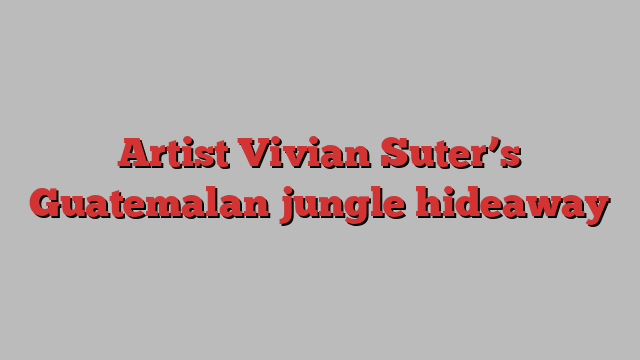
“I did fall in love with that tree,” says artist Vivian Suter, gesturing towards the enormous strangler fig in her garden, its roots wound like thick braids around clods of earth. It’s the reason she bought the property in Panajachel, in the Guatemalan Highlands and, although this was now 38 years ago, in her voice there is still the same enchantment.
Born in Argentina in 1949 to a Swiss father and an Austrian artist mother, Suter’s family moved to Basel when she was 13. She went on to study art at the Kunstgewerbeschule Basel; a Federal Art Scholarship and a show at Kunsthalle Basel swiftly followed. Today her work is held in the collections of institutions such as the Tate, the Guggenheim, and the Kunstmuseum in Luzern. But in 1981 she embarked on a trip to the US, abruptly leaving Switzerland.
Call it luck, call it fate: the circumstances that led to building her life in Panajachel are a series of providential near-chances. She wasn’t even supposed to be in Guatemala: she was on a trip to LA but struggled to get around and grew bored. “I got talked into going there, but without a car the city is really difficult.” And so she travelled first to Mexico and then to Guatemala “to see the ruins”, only ending up in Panajachel because it was too dangerous for her to travel at night.
She never left.
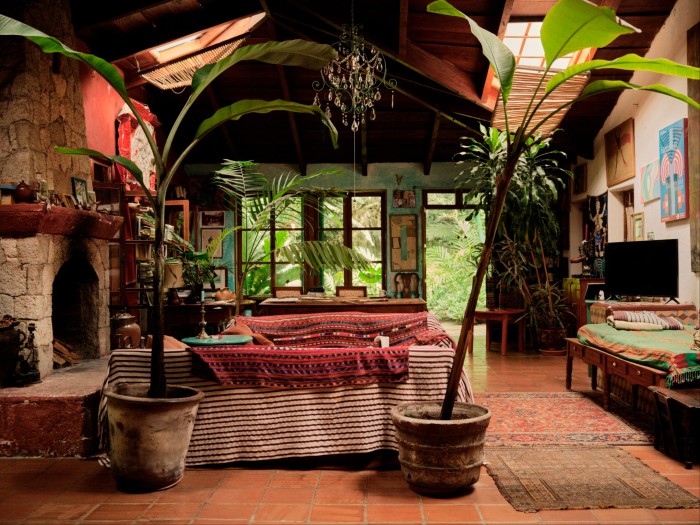
For a while, Suter lived in a house on Lake Atitlán, its shores flanked by a fringe of volcanoes. She planned to return to Switzerland when she became pregnant with her son, but left it too late to fly the long distance. And so she ended up here, on a former coffee plantation on the side of a mountain. That was luck, too — she says she heard the land was for sale from a local gardener. There was no house, no studio, nothing but the coffee plants and the view to the lake (which has now disappeared — the trees have become too big).
When her son was around one year old, Suter and her then-husband built the two-bedroom bungalow she now calls home. It was a move of necessity, rather than of artistic expression: “I never thought of building a house . . . I’d never had a wish to do that, either.” The driving force was speed — “It had to be done quickly; we had to move in” — a decision that influenced everything from its design to the materials used. “Adobe, wood, simple materials — the materials people use here.”
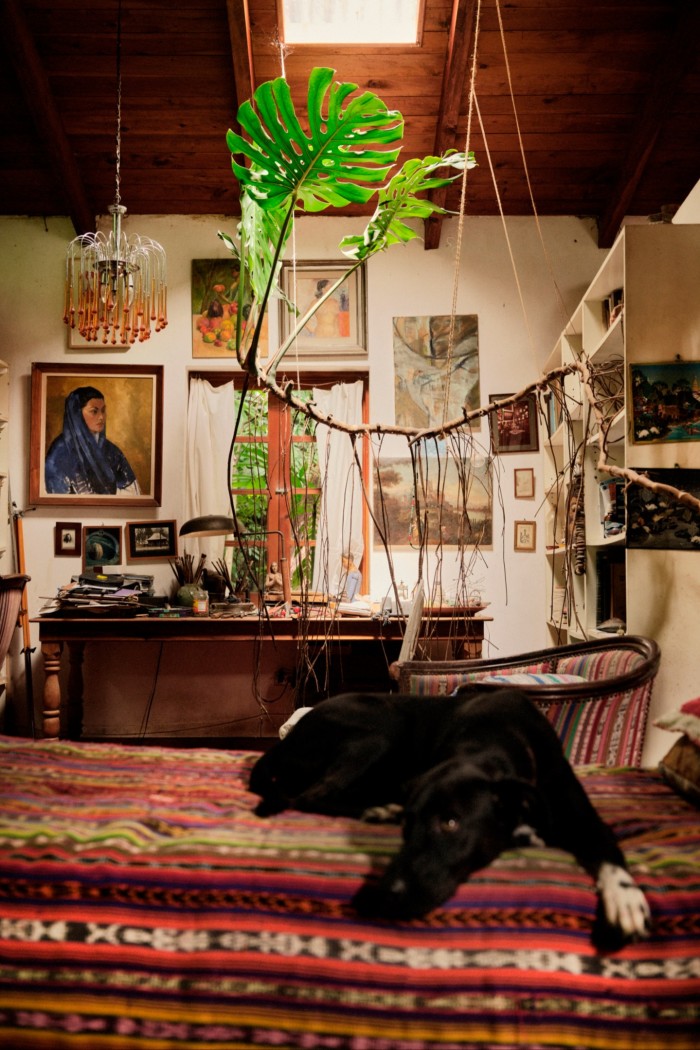
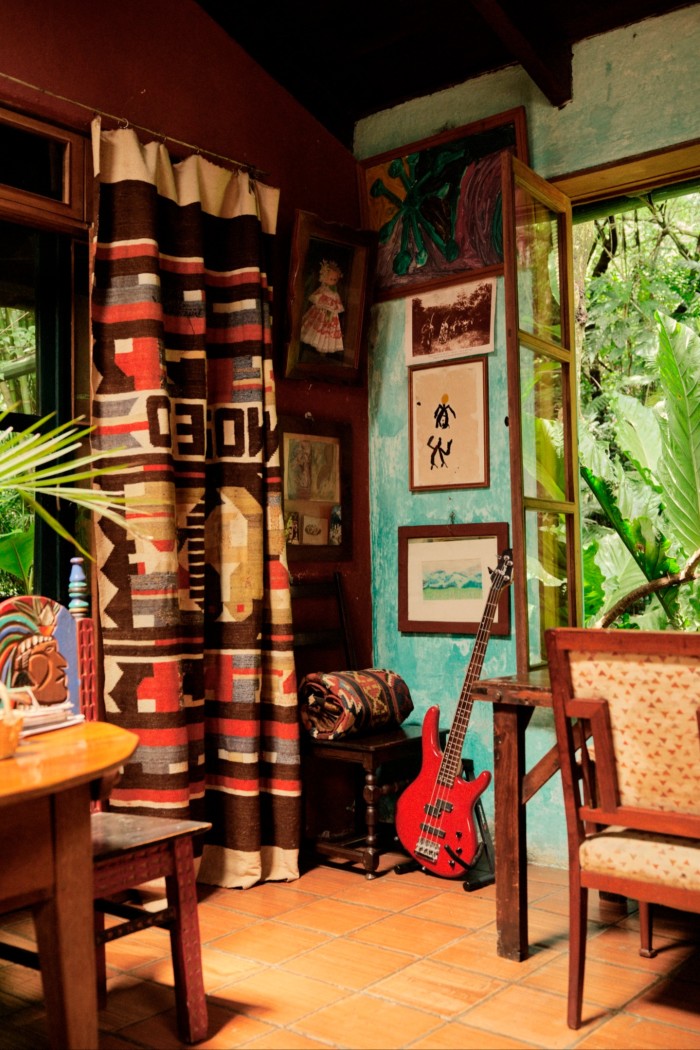
A short walk from the house is one of Suter’s studios, where her paintings are stored before being shown in venues such as Camden Art Centre, Tate Liverpool, the Brücke Museum and the Art Institute of Chicago. Her other studio is up the mountain. “I didn’t want it in the same space — I built it up there so I could get away from the house,” she says. “For me, surroundings are very important, visually, you know — what I see there, the light.” She works on her colourful abstract paintings in the open air, either under a mango tree or next to her studio on the mountain, and her large-scale works are often left outside to dry for weeks.
It’s an invitation to the natural world, an entreaty for Suter’s surroundings to join her in the act of creation. The epiphany came in 2005, when Hurricane Stan destroyed many of her paintings. She tried to clean dirt from the works that were recovered, “but suddenly, I saw a beauty in it. My practice changed with this consciousness, and I let more nature into my paintings, physically.”
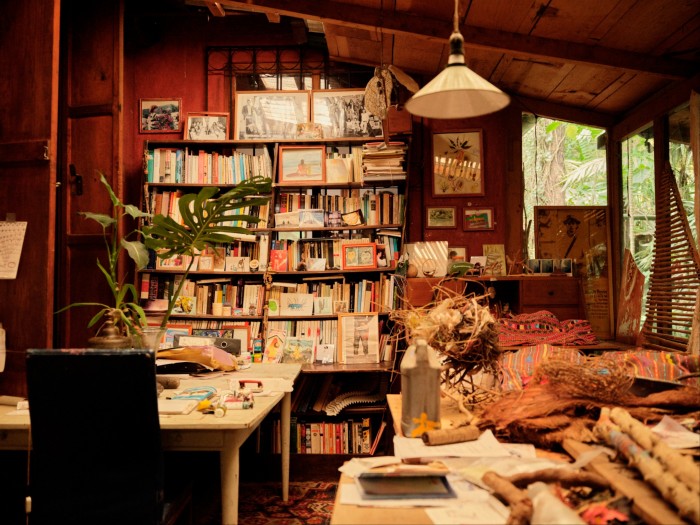
Suter’s work is characterised by these incorporations: “I just let it happen. I wanted to get away from making conceptual things. The mud, the rain, it splashes up, or maybe I take a bit from beside me and I use it . . . The leaves fall on it, it just happens. The dogs aren’t very well trained; they walk on [the canvases],” she says, laughing, about the pawprints visible on her paintings.
The three dogs are Suter’s closest companions, accompanying her wherever she goes in the house and garden. One of them, Disco, even lends his name to the artist’s new show at Lisbon’s Museum of Art, Architecture and Technology (MAAT). The 500 works on display at Disco include 163 pieces that have never been exhibited before.
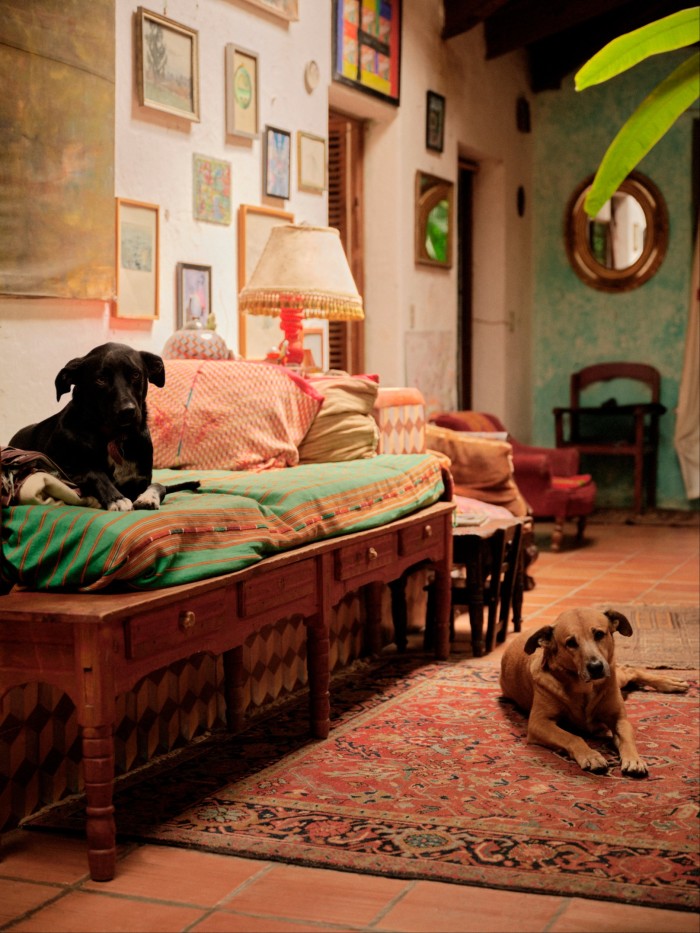
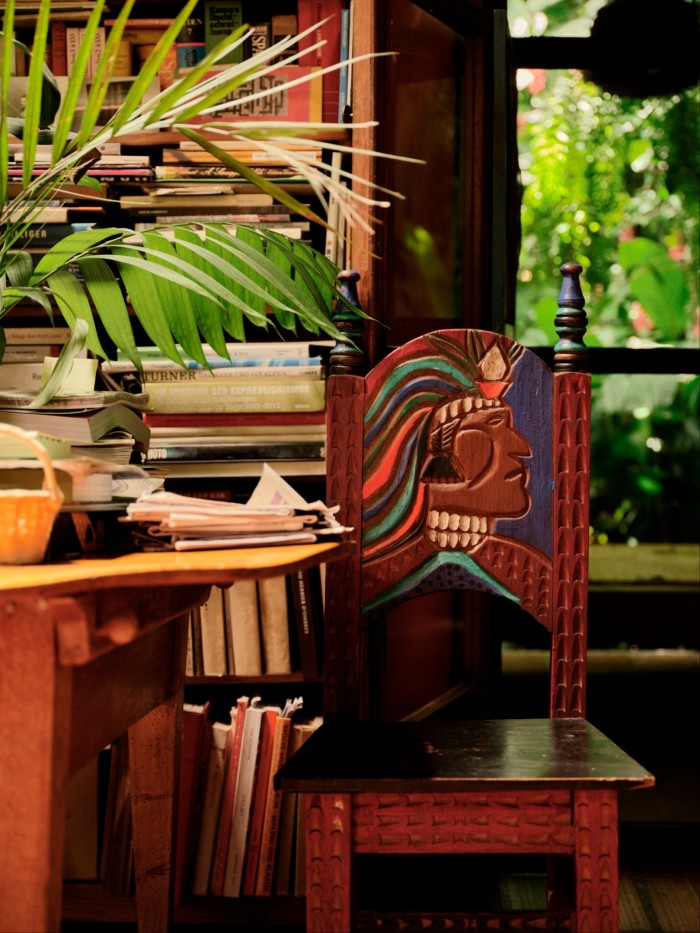
When Suter left Switzerland in the early 1980s, the galleries stopped calling. “They didn’t want to work with me. There was this attitude of ‘you left, and that’s it,’” she says. In the ensuing decades, she mostly withdrew from the art world — until Kunsthalle Basel curator Adam Szymczyk discovered her name in a pamphlet from a group show in the 1970s. After restaging the exhibition, Szymczyk asked Suter and her mother, the late collage artist Elisabeth Wild, to stage a joint show.
Things are different now from when she first moved to Guatemala, she says. “The art world has changed; communication has changed, so it’s easier to be far away, and interest has changed.”
Still, Suter’s location presents some logistical difficulties: she has to import her pigments from Europe, and the nearest hardware store is three hours away. She now works on unstretched canvas, a decision initially made so that she could roll up her paintings for transportation. Nevertheless, any time she leaves her home for international exhibitions or residencies, she tells me, “I always love to come back.”
Inside the house, Suter’s collaboration with her surroundings continues. In the living room, a variety of large pot plants are placed on side tables, desks, on the floor; their fronds turning towards the skylight like outstretched fingers. The walls are painted in turquoise and a dark red the shade of sapote stones, colours that Suter explains are traditional to Guatemalan houses.
Local Panajachel fabrics hang on the walls, in doorways, placed on sofas and chairs. “Every [Guatemalan] village has its own textiles — people, mostly women or older men, still wear the traditional dresses made from this cloth,” Suter says, sweeping her hand towards curtains printed with geometric patterns in yellows, reds and blues.
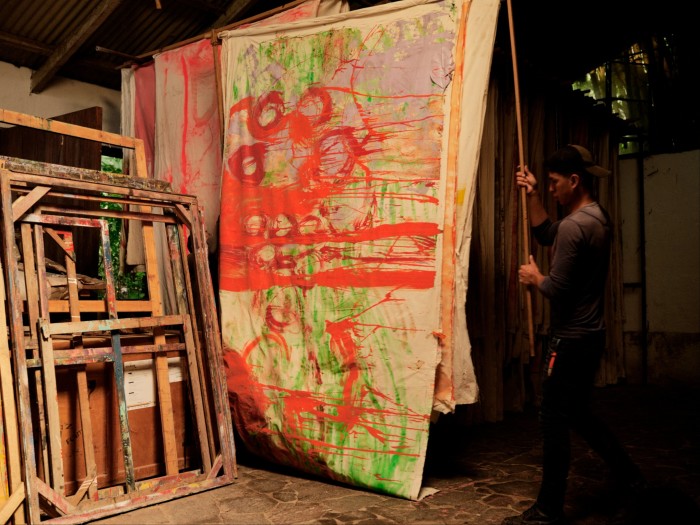
Aside from the fabrics — and a chair with a carved profile of a Mayan priest painted in blue and red — Suter has largely left the Guatemalan influence to the structure of the house. For its furnishings, she’s turned to her European heritage. Many pieces are antiques, family heirlooms brought from Switzerland: a sleek, Art Deco desk in light wood; a carved armchair with gold velvet upholstery; a heavy Victorian cabinet.
Persian rugs are laid, overlapping, on the terracotta floor, and bookshelves laden with paperbacks, family photographs and trinkets line the walls. It’s all part of Suter’s desire to create “something historical for my son . . . things from our family, from Europe, objects I collected from my trips”. A small crystal chandelier and disco ball catch the sunlight.
But what immediately pulls focus is the patchwork of paintings — big, small, framed, unframed — on the wall. Many of them are by Suter herself; others are by her son Pancho, a musician who lives on the other side of the lake, and her mother, who moved in with Suter in 1996. A traditional oil painting of a ship is displayed alongside a botanical print, a Surrealist painting of a fruit and a cerulean collage.
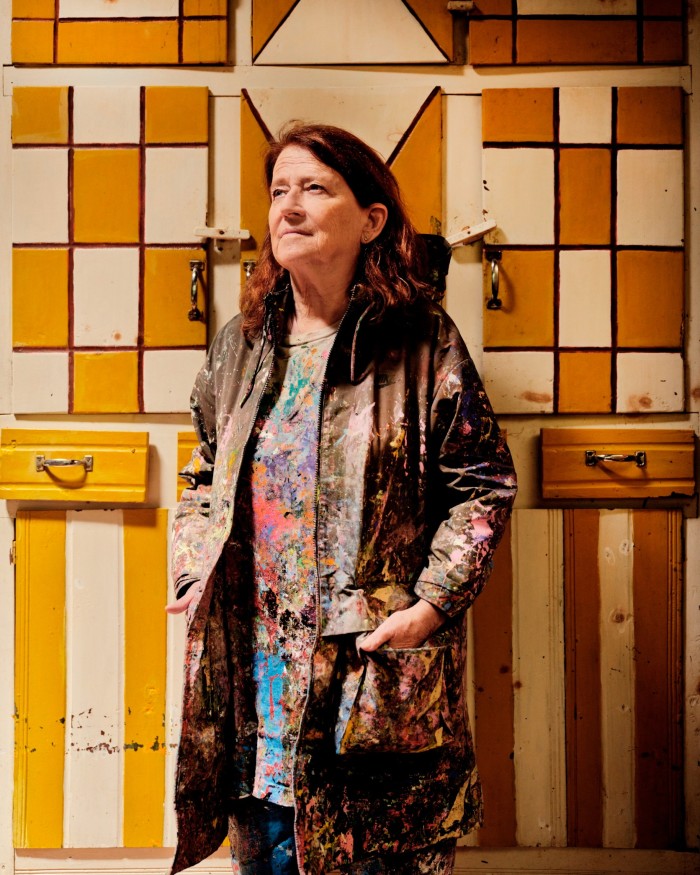
The effect is somehow harmonious. Suter rejects the idea that her home is a reflection of her artistic practice. “I don’t think it has to do with my painting,” she says. “It’s more personal.” Yet there is a kind of thematic resonance between the intersecting colours, shapes and textures in her home and those in her paintings. In its fusion of Guatemalan and European aesthetics, its disregard for the boundary between interior and exterior, and its embrace of the natural world, Suter’s home feels like an encapsulation of her approach to her art — and her way of living.
“Disco”, until March 17 2025; maat.pt/en
Find out about our latest stories first — follow @ft_houseandhome on Instagram